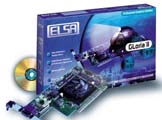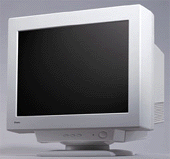Buyer's Guide: High-End Systems - July 2000
by Mike Andrawes on July 20, 2000 2:19 AM EST- Posted in
- Guides
High-end Professional
3D
A high-end professional
3D system requires a number of high-end components. CPU performance is critical
and we need more RAM here than any other system we've looked at previously.
The graphics requirements are also very different in the professional space
and a large monitor is critical.
 Processor
– AMD Athlon "Thunderbird" 900 - $475
Processor
– AMD Athlon "Thunderbird" 900 - $475
At similar clock
speeds, the Athlon holds a significant advantage in price and performance, and
for that reason, we’ve chosen a Socket-A Athlon 900, which means that it's using
the new Thunderbird core with on-die cache.
Besides the direct performance benefits of full speed on-die cache, we also get the side benefit of enhanced overclockability. If you're willing to overclock our CPU, you can save some money by going with the 700 MHz model, most of which will hit 900 - 950 MHz at default voltage, all without exotic cooling.
For more information on all Athlon processors, read our Athlon "Thunderbird" 1GHz Review and our Thunderbird / Duron Overclocking Revealed Aritcle.
Motherboard – FIC AZ-11
- $140
Socket-A motherboard selection is still relatively weak as boards are still
trickling into retailers. While the FIC AZ-11 is not exactly a ground breaking
motherboard, it does get the job done. More importantly, it's one of the few
standard ATX models currently available. Unlike the upcoming ASUS A7V or ABIT
KT7, the AZ-11 does not allow unlocking the Socket-A multiplier in its shipping
form.However, our
recent Thunderbird/Duron Overclocking Article
gives you all the information you'll need to modify the AZ-11 to enable this
feature. The modifications are not for the faint of heart, but the AZ-11 is
one of the few boards available now that support such overclocking. Those that
don't feel so comfortable with a soldering iron, we recommend waiting for the
ASUS or ABIT boards to be released.
For more information, read our FIC AZ-11 Review and our Thunderbird / Duron Overclocking Revealed Aritcle.
Memory – 512MB Corsair
or Mushkin PC133 SDRAM (2x256MB DIMM’s) – $350 x 2
Even though memory
is relatively cheap these days, it is a key factor in the performance of most
professional apps. For a high-end system like this, 512MB is not unreasonable
and easily fits within the budget.
As for the exact brand of memory, we recommend Corsair or Mushkin modules. We use them in our test systems and have had absolutely no problems with them.
 Video
Card – ELSA GLoria II (NVIDIA Quadro) - $600
Video
Card – ELSA GLoria II (NVIDIA Quadro) - $600
NVIDIA’s Quadro
is simply the most powerful workstation 3D accelerator we’ve tested to date.
Based on the same T&L GPU of the GeForce, the Quadro runs at a higher core
clock speed, 135 MHz, and enables certain features that were left disabled on
the GeForce. Among these features is enhanced support for anti-aliased points
and lines, which, although it isn’t a commonly used feature with most users,
was an extremely poor performance point for the GeForce.
With their previous experience in the professional market, ELSA was able to score exclusive rights to manufacture the Quadro. The Gloria II is ELSA’s implementation and comes with 64MB SDR SDRAM. While a DDR version of the Quadro has been announced, and even tested by AnandTech, it’s not actually available anywhere at the moment. At $650, the SDR version of the Gloria II is a relative steal compared to some of the other professional 3D accelerators out there. Throw in the fact that it’s fully support under Windows NT 4.0, Windows 2000, and Linux and it becomes quite clear that the Quadro is the best choice.
Will we see a professional version of the GeForce 2 GTS? It seems likely after the success of the Quadro in the professional market. In this case, it may be wise to hold off a bit if you can. For more information, see our ELSA Gloria II Review.
 Monitor
– iiYama VisionMaster PRO 510 - $1000
Monitor
– iiYama VisionMaster PRO 510 - $1000
Using a Mitsubishi
Diamondtron NF, the iiYama VisionMaster Pro 510 provides a perfectly flat display
surface using the same technology in Sony’s FD Trinitron models, but at a lower
cost. Make sure you can deal with the damper wires that all Trinitron style
tubes have. The VisionMaster PRO 510 is a 22” monitor and has been highly acclaimed
here on AnandTech and by owners alike.
For more information, read our iiYama VisionMaster PRO 450 and VisionMaster PRO 510 Reviews.










0 Comments
View All Comments